
Erin Garcia de Jesús
Staff writer, Science News
Erin I. Garcia de Jesús is a staff writer at Science News. She holds a Ph.D. in microbiology from the University of Washington, where she studied virus/host co-evolution. After deciding science as a whole was too fascinating to spend a career studying one topic, she went on to earn a master’s in science communication from the University of California, Santa Cruz. Her writing has appeared in Nature News, Science, Eos, Smithsonian Voices and more, and she was the winter 2019 science writing intern at Science News.

All Stories by Erin Garcia de Jesús
-
 Animals
AnimalsThese healthy fish have bacteria in their brains
The bodies of most animals keep germs, usually linked to disease, out of their brains. But some fish that host microbes seem to do just fine.
-
 Plants
PlantsInsect-eating plants digest faster with a fungal friend
Insects stuck in sundews’ sticky goo break down faster when the plants host an enzyme-making fungus.
-
 Animals
AnimalsThis spider traps flashy fireflies as bait to catch related prey
When stuck in an orb weaver spider’s web, male fireflies start to blink more like female fireflies — luring in more males.
-
 Animals
AnimalsCan furry pets get H5N1 bird flu and spread it to us?
The 2024 pandemic-style bird flu circulating in birds has shown up in cats and other pet species.
-
 Animals
AnimalsIn 2024, bird flu posed big risks — and to far more than birds
Cows, elephant seals and polar bears are among unexpected bird flu casualties. Learn about potential risks to them, to people and to our food supplies.
-
 Animals
AnimalsParrots may offer clues to how our intelligence evolved
Studies of the brainy birds’ abilities to use tools, solve puzzles, speak words and more may teach us about how our species got our smarts.
-
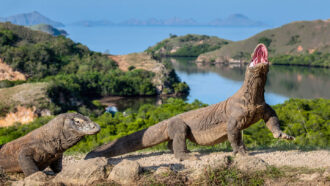 Animals
AnimalsMetal gives the teeth of Komodo dragons their super strength
Investigating Komodo dragons' ironclad teeth in greater detail could also help solve a dental mystery in dinosaurs.
-
 Humans
HumansHow much more can Olympic speed records fall?
The human body can go faster than current world records on land and in water. But to reach full potential, our technique must be perfect.
-
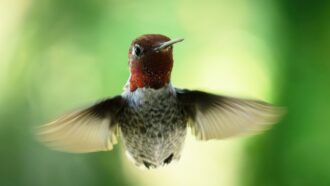 Animals
AnimalsSee how hummingbirds sneak through small spaces
Anna’s hummingbirds can use a couple of different techniques to get through gaps smaller than their wingspan.
-
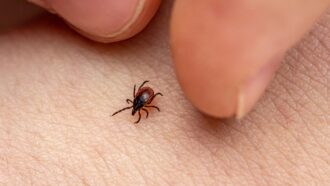 Genetics
GeneticsA protein in sweat may protect people from Lyme disease
That protein stopped the disease-causing bacterium from growing in lab dishes or infecting mice.
-
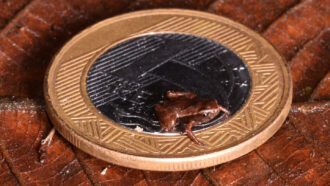 Animals
AnimalsThis frog is the world’s smallest known vertebrate
Neither fleas nor toads, Brazilian flea toads are almost flea-sized. These mini frogs are small enough to fit on a pinkie fingernail.
-
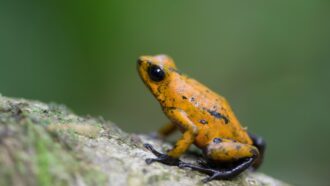 Animals
AnimalsAt last: How poison dart frogs ship defense toxins to their skin
A liver protein appears to help the amphibians collect and move toxins from their food to their skin. Those toxins can defend the frogs from predators.